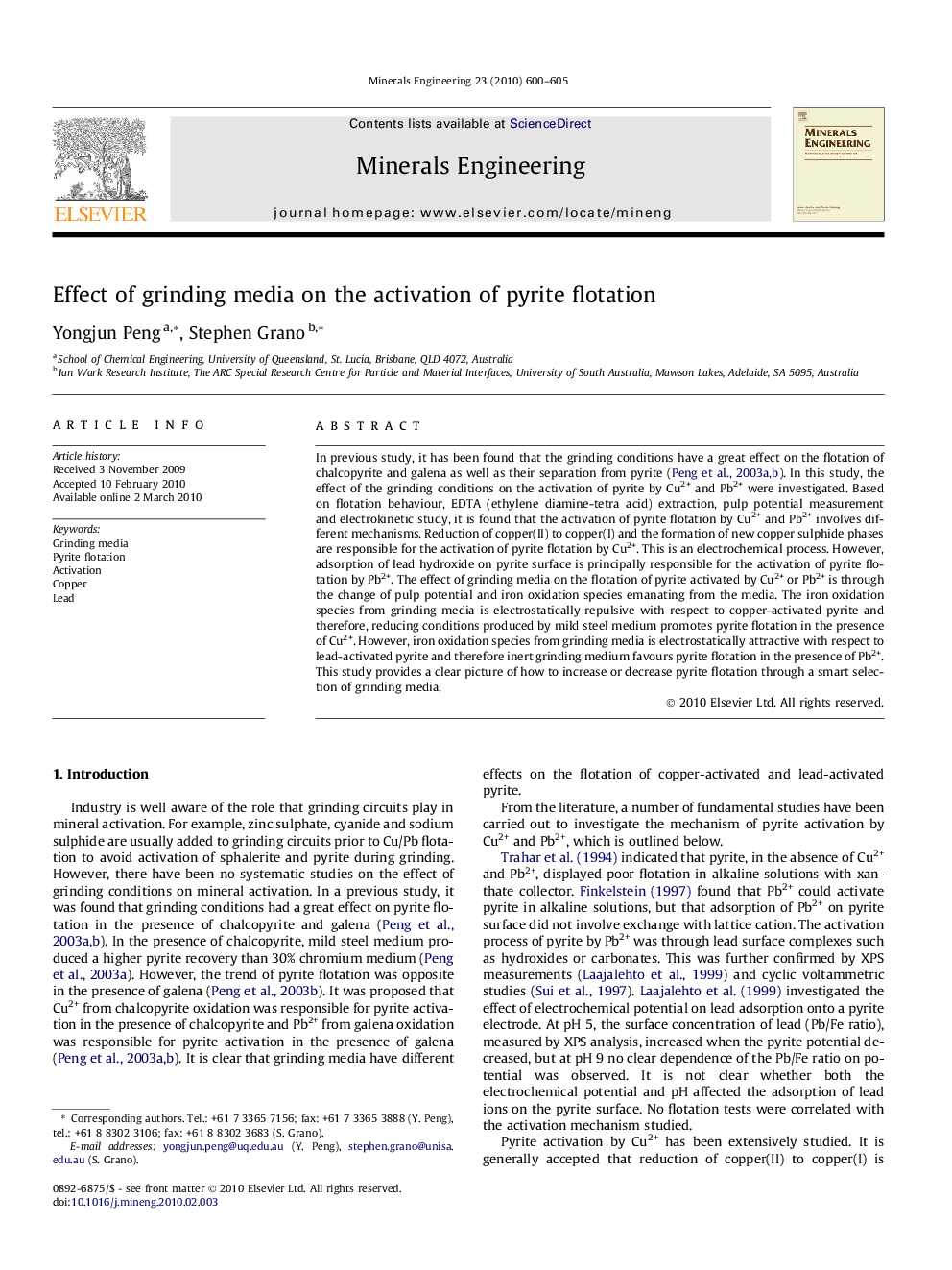| Article ID | Journal | Published Year | Pages | File Type |
|---|---|---|---|---|
| 233945 | Minerals Engineering | 2010 | 6 Pages |
In previous study, it has been found that the grinding conditions have a great effect on the flotation of chalcopyrite and galena as well as their separation from pyrite (Peng et al., 2003a and Peng et al., 2003b). In this study, the effect of the grinding conditions on the activation of pyrite by Cu2+ and Pb2+ were investigated. Based on flotation behaviour, EDTA (ethylene diamine-tetra acid) extraction, pulp potential measurement and electrokinetic study, it is found that the activation of pyrite flotation by Cu2+ and Pb2+ involves different mechanisms. Reduction of copper(II) to copper(I) and the formation of new copper sulphide phases are responsible for the activation of pyrite flotation by Cu2+. This is an electrochemical process. However, adsorption of lead hydroxide on pyrite surface is principally responsible for the activation of pyrite flotation by Pb2+. The effect of grinding media on the flotation of pyrite activated by Cu2+ or Pb2+ is through the change of pulp potential and iron oxidation species emanating from the media. The iron oxidation species from grinding media is electrostatically repulsive with respect to copper-activated pyrite and therefore, reducing conditions produced by mild steel medium promotes pyrite flotation in the presence of Cu2+. However, iron oxidation species from grinding media is electrostatically attractive with respect to lead-activated pyrite and therefore inert grinding medium favours pyrite flotation in the presence of Pb2+. This study provides a clear picture of how to increase or decrease pyrite flotation through a smart selection of grinding media.
